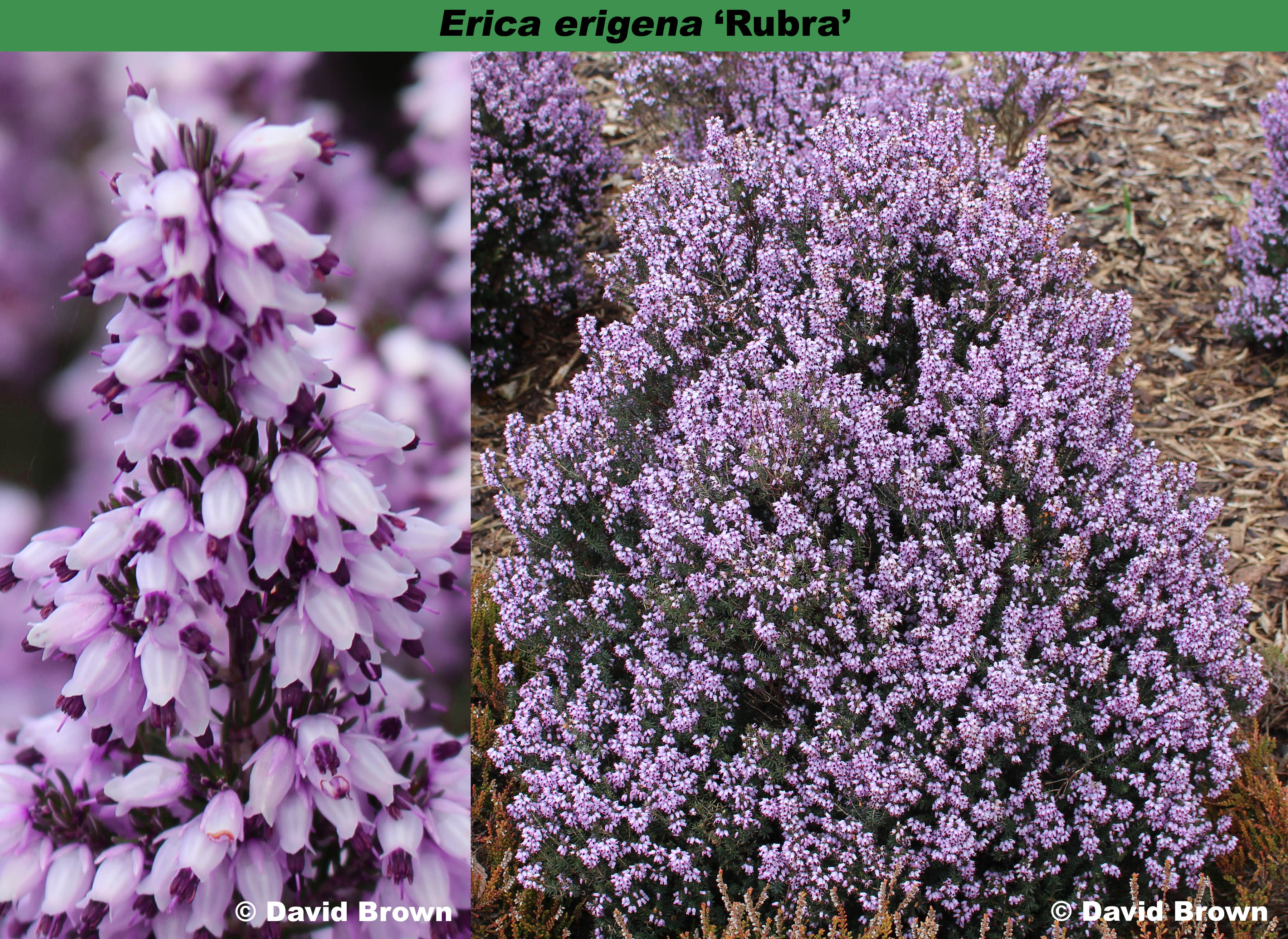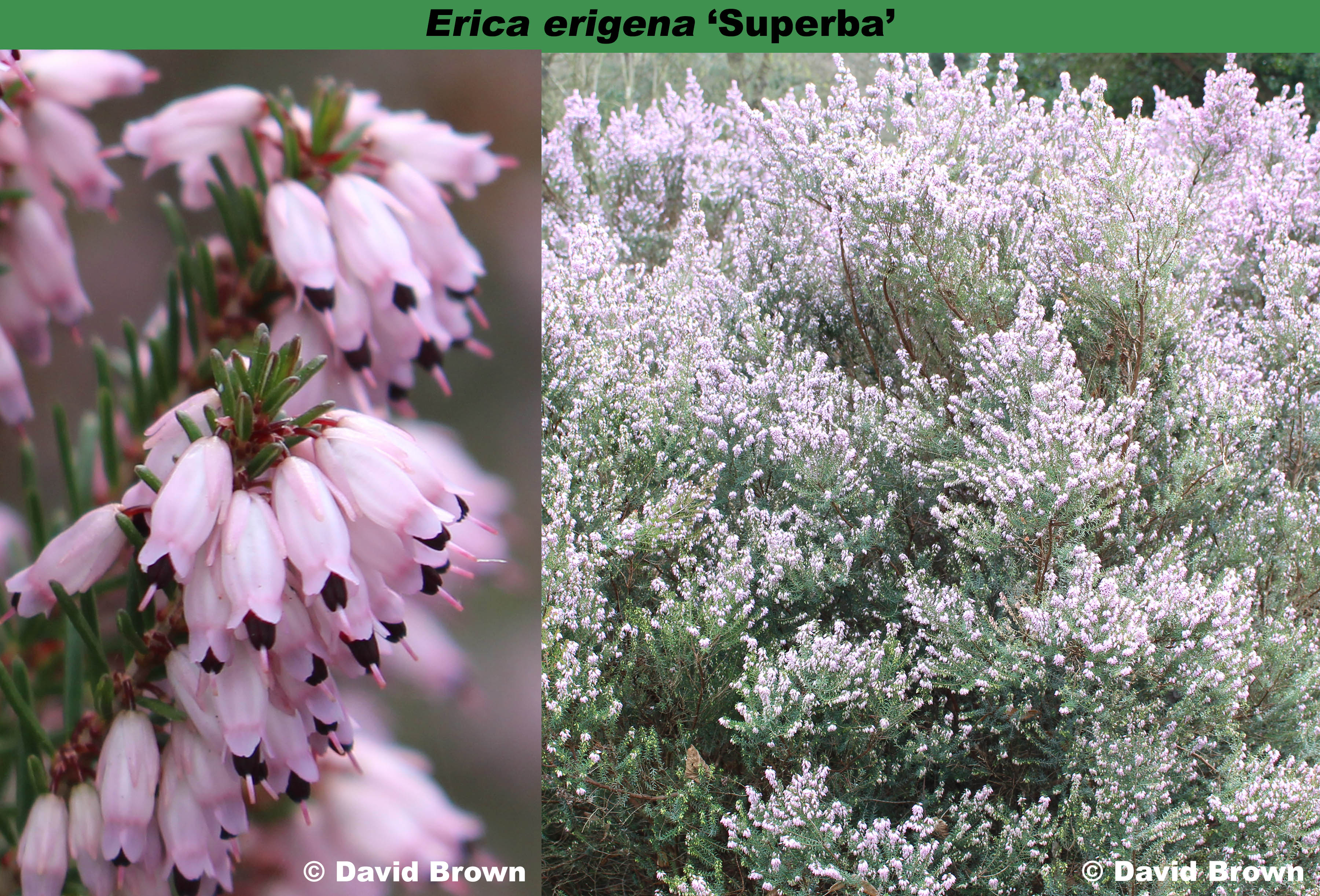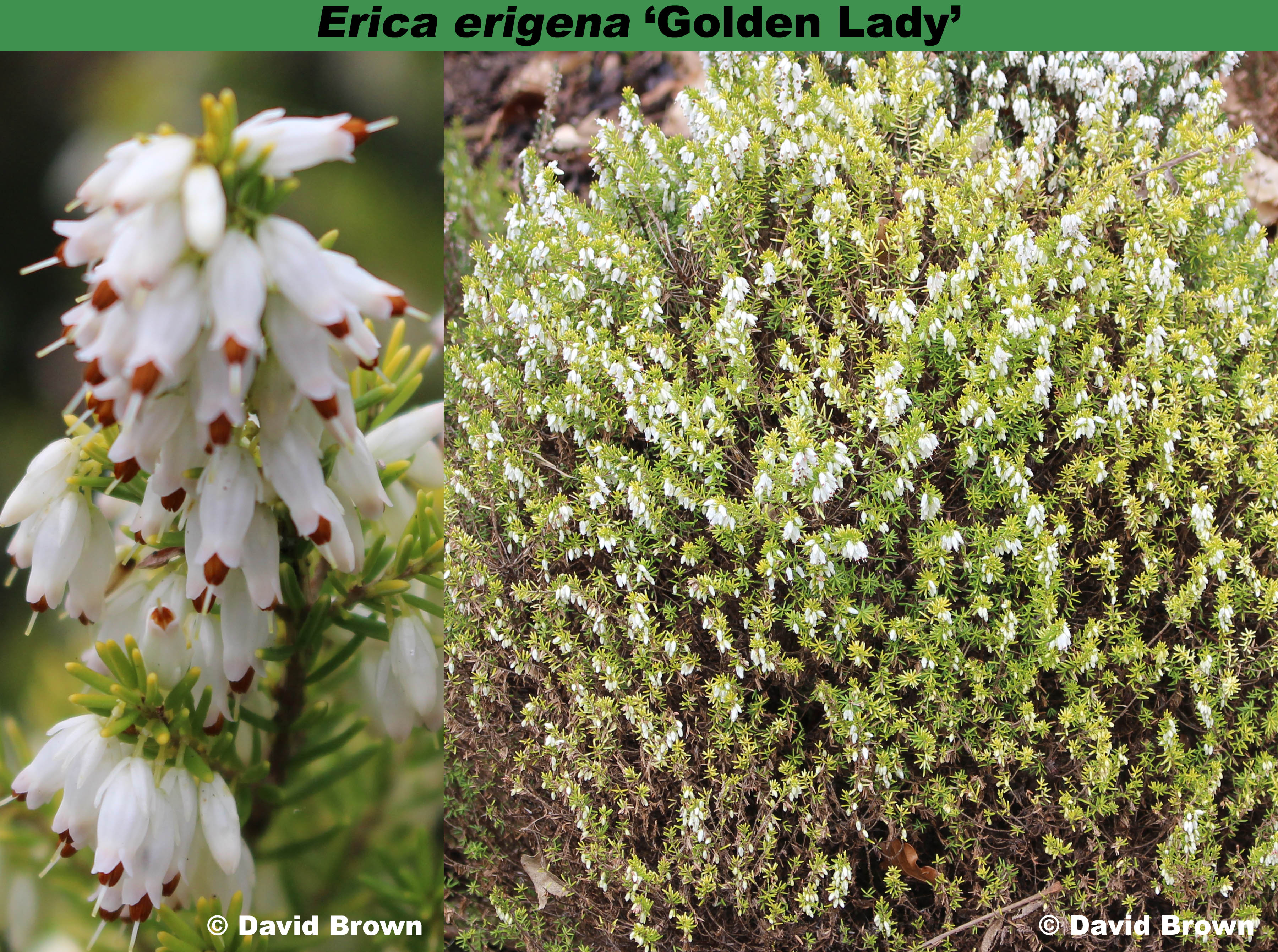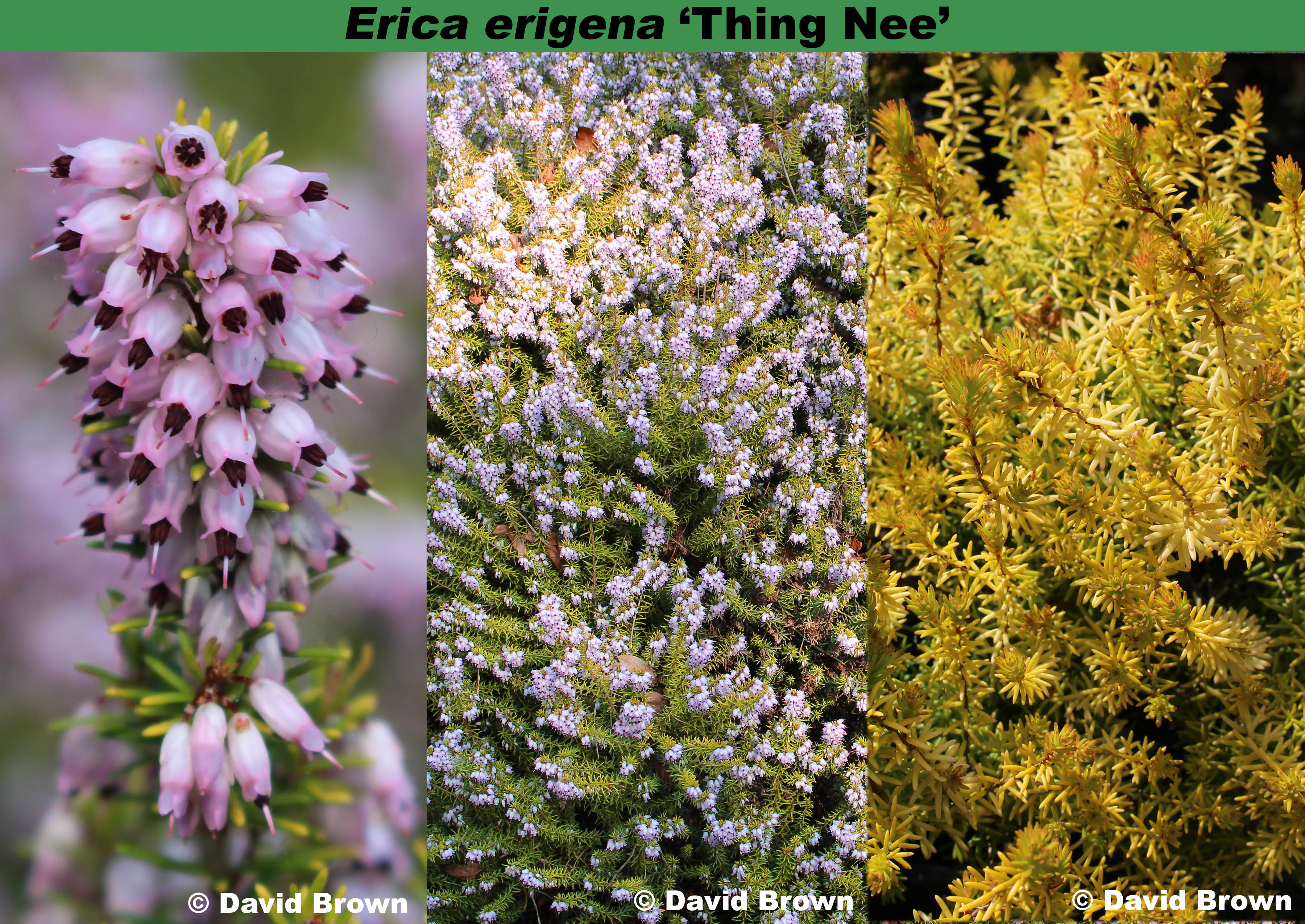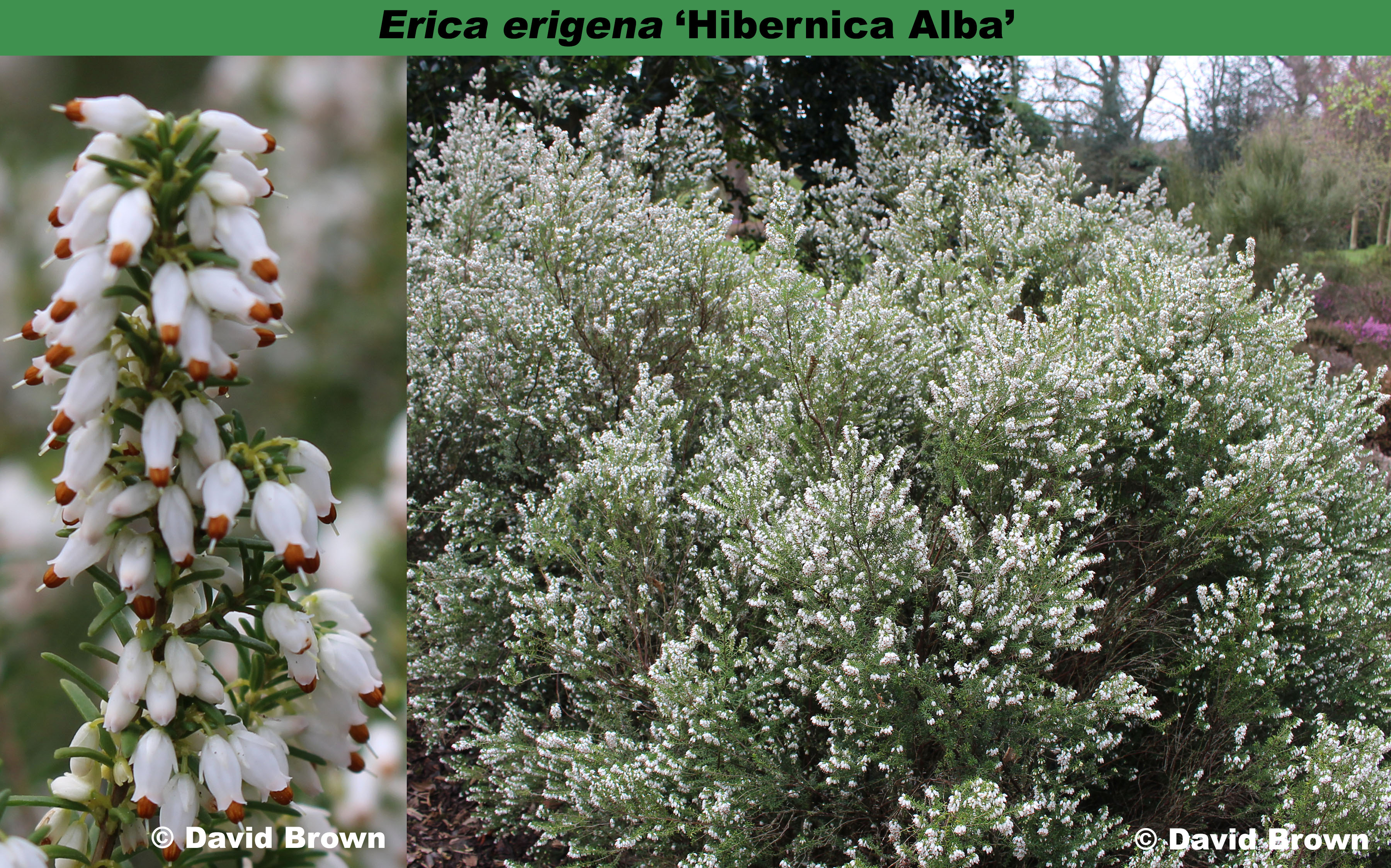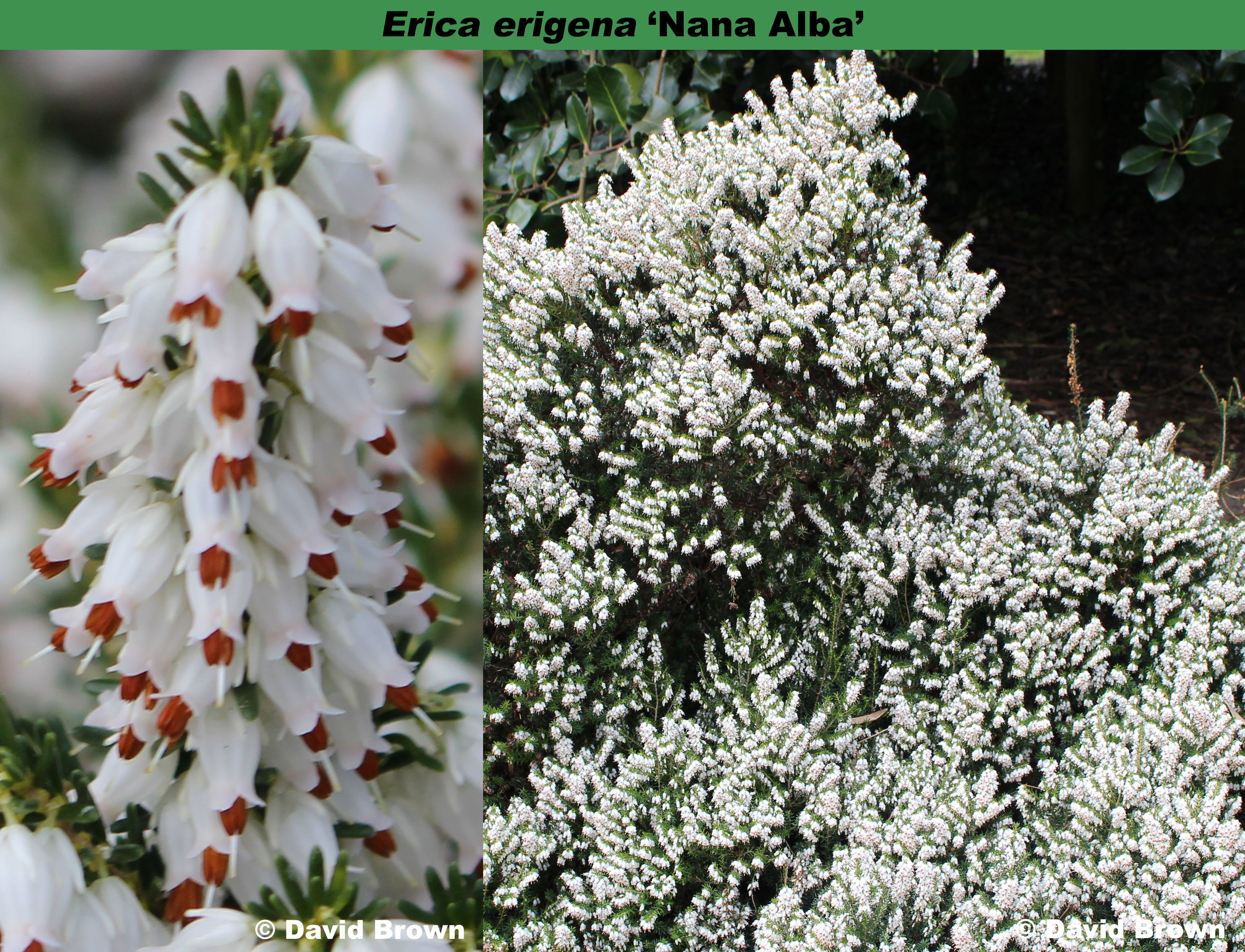Lavender (H3) flowers, IV; dark green foliage; height 31–45cm; spread 46–60cm. Subject to frost damage in much the same way as ‘Brightness‘.
Listed as early as 1867 by J. Smith (Derbyshire, England) and 1882 by Rodger, M’Clelland & Co. (Newry, County Down, Ireland) both as Erica mediterranea, and this name was applied in 1920s to ‘a quite excellent dark-flowered form of Erica carnea.’
Named from Latin ruber = red.

